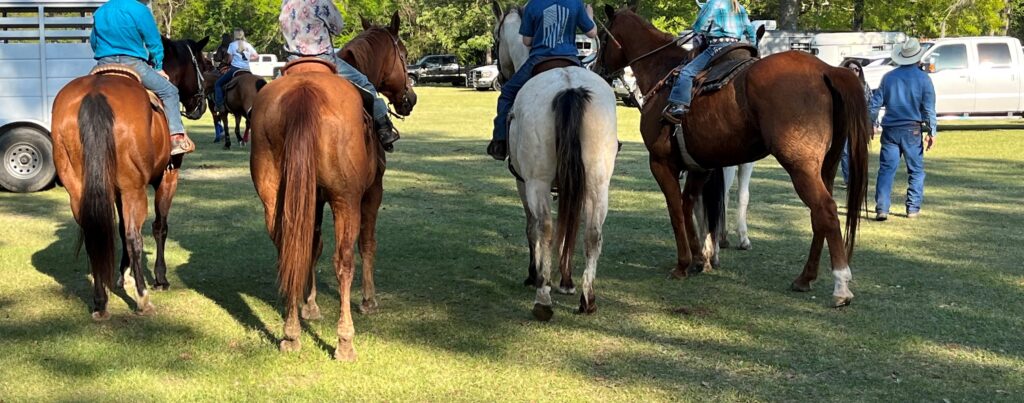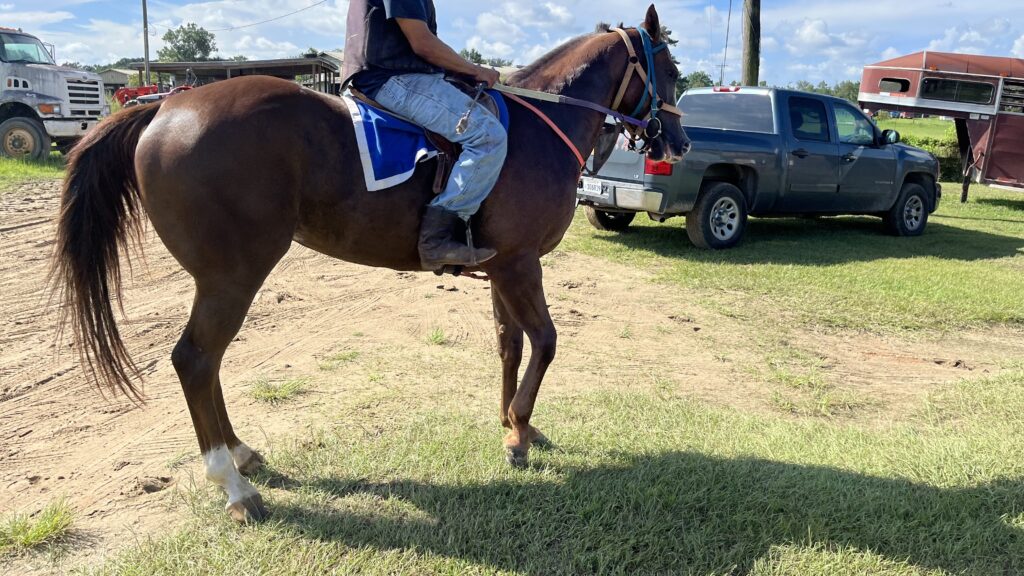Last updated: September 18, 2024
Choosing the perfect horse breed is a crucial step for any equestrian. The American Quarter Horse, with its rich history and versatile capabilities, stands out as a popular choice. My journey with horses began in the company of Quarter Horses, where I learned to appreciate their appeal.
But what exactly makes it so special, and is it the ideal breed for your needs? Let’s explore the unique qualities that make the Quarter Horse special and assess whether it aligns with your horse-riding goals.

Versatility at Its Best
Picture a horse that can transition from a high-energy rodeo event to a peaceful afternoon ride through the countryside. This adaptability is the hallmark of the Quarter Horse, making it a favorite among competitive riders and leisure enthusiasts.
- Wide Range of Disciplines: Whether it’s the adrenaline of barrel racing or the elegance of dressage, Quarter Horses excel in various equestrian sports.
- Family-Friendly: Their calm demeanor makes them perfect for leisurely trail rides, ensuring a pleasant experience for riders of all ages.

A Breed for Every Rider
The American Quarter Horse exemplifies unparalleled versatility and intelligence, making it an exceptional companion for riders at various stages of their equestrian journey. This breed’s ability to meet the needs of both novice and experienced riders alike underscores its versatility and intelligence.
- Beginner-Friendly: Known for their patience and willingness to learn, making them excellent teachers for new riders.
- Challenges for Experienced Riders: Their agility and intelligence offer endless opportunities for growth in competitive settings.

Champion Performance
The thrill of watching a Quarter Horse sprint to victory in a tight race or skillfully navigate a challenging rodeo course is unmatched. Their competitive spirit and physical prowess make them natural athletes.
- Speed Kings and Queens: Dominant in quarter-mile races, showcasing their explosive acceleration and power.
- Rodeo Stars: Their agility shines in rodeo events, where quick reflexes and speed are crucial for success.
A Legacy of Excellence
Behind every Quarter Horse is a legacy of excellence supported by the AQHA. This commitment to quality ensures that the breed continues to meet the high expectations of riders worldwide.
- American Quarter Horse Association (AQHA): The world’s largest equine breed registry, ensuring high standards of quality and performance.
- Heritage and Evolution: A commitment to preserving the breed’s history while adapting to the needs of modern equestrians.

Frequently Asked Questions (FAQs)
Are Quarter Horses suitable for beginners?
Absolutely. Quarter Horses are known for their gentle temperament and patience, making them ideal for beginners. Their willingness to learn and adapt to their rider’s skill level contributes to a positive learning experience.
What disciplines are Quarter Horses good at?
Quarter Horses excel in a variety of disciplines. They are the top ranch breed but are not limited to Western events like barrel racing and roping, English disciplines such as dressage and show jumping, and they are also excellent trail riding companions.
How do I get involved with Quarter Horses?
Start by reaching out to the American Quarter Horse Association (AQHA) or local horse clubs for information on events, shows, and educational resources. Visiting farms and stables that breed or train Quarter Horses can also provide valuable hands-on experience.
Can Quarter Horses compete at high levels in dressage and jumping?
Yes, while Quarter Horses are often associated with Western riding disciplines, they have also successfully competed in dressage and jumping. Their versatility and athleticism allow them to perform well across a range of equestrian sports.
Conclusion
The American Quarter Horse offers a unique blend of versatility, performance, and companionship. Whether you’re a novice rider looking for a patient and forgiving partner or an experienced competitor seeking a capable and spirited companion, the Quarter Horse has something to offer.
With its ability to excel in various disciplines and its suitability for riders of all levels, it’s clear why this breed remains a favorite in the equestrian world.
Call to Action
Connect with the Quarter Horse Community
Are you intrigued by the versatility and intelligence of the American Quarter Horse? Take the next step in your equestrian journey by connecting with local Quarter Horse associations, visiting a nearby stable that specializes in this breed, or attending a Quarter Horse event. There’s a whole community of passionate Quarter Horse enthusiasts waiting to welcome you.
Incorporating a CTA and FAQs into your content not only enriches the article but also aligns with Google’s preference for comprehensive, engaging, and user-friendly content.
List of References
- American Quarter Horse Association (AQHA): For comprehensive information on the breed’s standards, history, and events.
- National Center for Biotechnology Information (NCBI): For scientific studies and research on the physical capabilities and characteristics of Quarter Horses.
- United States Equestrian Federation (USEF): For details on Quarter Horses competing in English disciplines, including dressage and jumping.
- American Horse Council: For insights into the role of Quarter Horses in the equestrian industry and their economic impact.
- EquiSearch: For articles, expert opinions, and training tips specifically related to Quarter Horses.
- Horse Racing Sense: For practical advice, horse care tips, and insights into the versatility of Quarter Horses in various equestrian disciplines.
If you are interested in adopting a racing quarterhorse, click this link, it provides helpful information.

About the Author: Miles Henry
Lifelong Horseman | Racehorse Owner | Published Author
Miles Henry brings over 25 years of hands-on experience training and owning Thoroughbred racehorses. Raised with Quarter Horses and Appaloosas, he’s spent a lifetime learning from horses—on the track, in the barn, and in the field. Today, he runs a small but successful racing stable in Louisiana and shares real-world insights on HorseRacingSense.com, helping horse owners, fans, and bettors navigate the sport with confidence.
📚 Books: View Miles’s books on Amazon »
🎧 Podcast Guest: Animal Tales Ep. 32 |
YouTube Interview
📩 Newsletter: Sign up for racing tips and horse care advice »
🔗 Follow Miles:
Twitter |
Facebook |
YouTube


